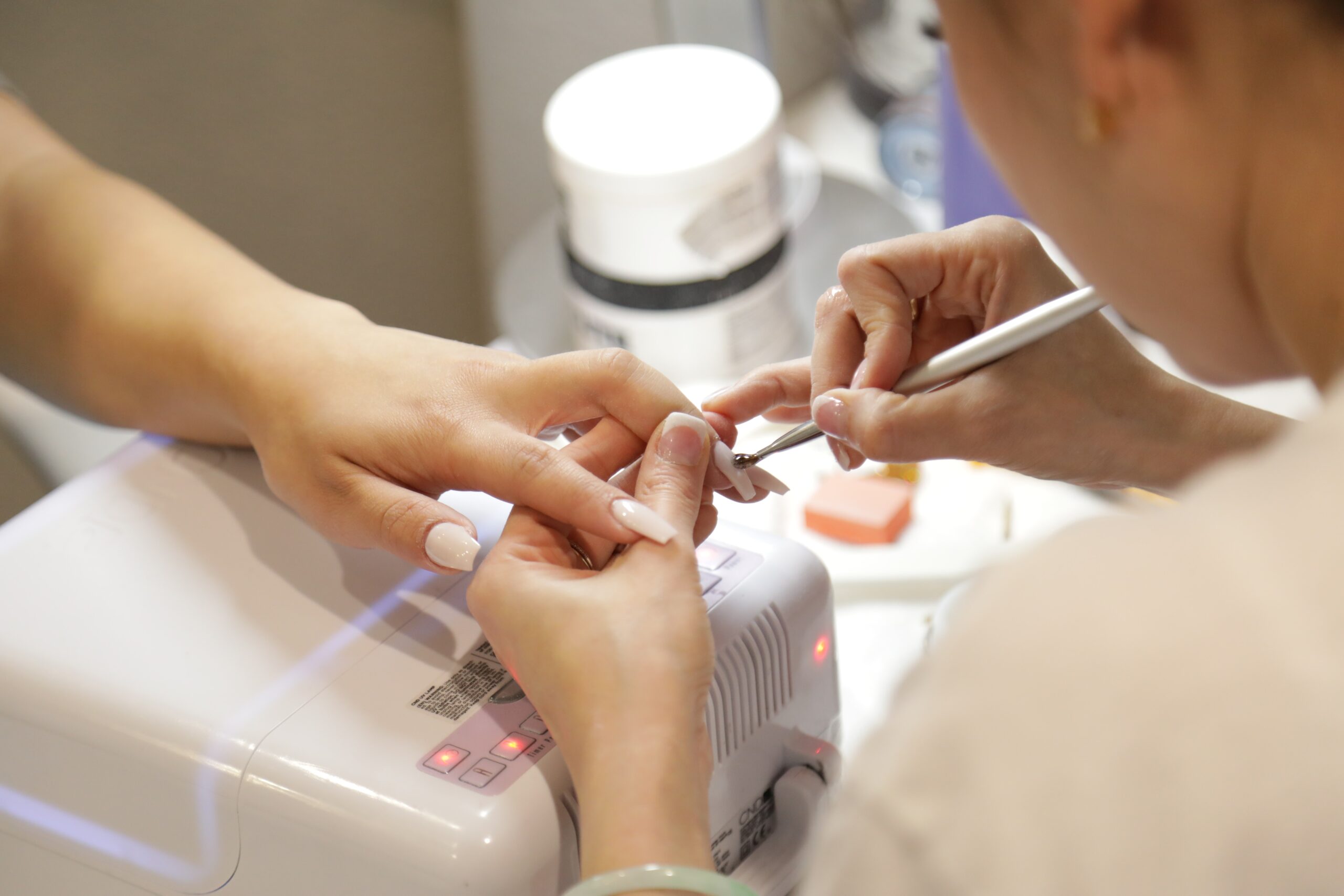Health in the Media: Can Nail Lamps Cause Cancer?
Posted on 17th March 2023 by Gabriela Negrete-Tobar

At the beginning of 2023, an article published in Nature Communications raised concerns as to whether UV nail lamps can cause cancer. According to the study results published in the article, UV nail lamps can cause DNA damage to cells. Consequently, the media was flooded with news about it. An article in the Washington Post read: “UV dryers for gel nails can harm DNA, study says. Should I use them?”. Also covered by Teen Vogue, which is directed at a younger audience, was: “Is UV Light for Nails Safe? Dermatologists Weigh In on New Cancer Study”.
Gel manicures are widely popular for their durability. People report getting them every 2 weeks on average, accounting for 6-10 minutes of exposure to nail lamp lights per session. Some have household gel nail polish kits, but their frequency of use hasn’t been described. Experts are trying to establish if using nail lamps can cause cancer because they have similar light bulbs as tanning beds which are a known risk factor for early onset of the disease. In this blog you can read about the current available evidence on the topic.
Some concepts to keep in mind while reading
- Nail drying lamps are made of fluorescent (UV) or LED bulbs and are used to dry gel nail polish formulas.
- Elastosis is a sign of solar damage. The skin gets a yellow tint and develops wrinkles that don’t vanish when you stretch it.
- Skin sagging is a sign of solar damage. The skin appears loose and doesn’t hold its shape.
- Erythemal Irradiance Response is where the skin turns red as an inflammatory response to UV radiation exposure.
- UV-A is a radiation ray that travels between 315–400 nm wavelength. It makes up part of sunlight and is 90% of the UV radiation that reaches the earth’s surface. Additionally, the International Agency of Research on Cancer classified it as a class 1 carcinogen, but it causes little direct damage to DNA. Significantly, most of its toxicity comes from cosmetic use like tanning beds.
- UV-B is also a radiation ray but is between 280–315 nm wavelength. It makes up part of sunlight but is just 10% of the UV that reaches the earth. It is also classified as a carcinogen, causes direct DNA damage to the cell, and is found in cosmetic appliances.
- Visual light is electromagnetic radiation visual to the human eye. It also forms a part of sunlight, but is not classified as a carcinogen.
- Genotoxicity is the damage to DNA caused by harmful substances.
- ROS (reactive oxygen species) are species produced naturally by the cell. They damage proteins, lipids and nucleic acids in the cell, equally control inflammation, cell survival, cell death and DNA changes.
Now let’s look at some of the available evidence
There have been multiple case reports published since 2009 describing the medical history of adult women (40–50-year-olds). These patients had low recreational sunlight exposure, indoor jobs, Fitzpatrick skin type II-III and didn’t have a family or individual history of skin cancer. Furthermore, they all had +10 years of bimonthly exposure to UV nail lamps. Authors described finding elastosis and lesions on the dorsum of their hands and later, confirmed with biopsy, squamous cell carcinoma. Most patients didn’t have signs of solar damage in other skin regions besides the hands. The authors concluded that there could be possible correlation between the exposure to UV nail lamps and skin cancer.
Other studies have measured wavelengths emitted by nail drying lamps. One of the bigger trials conducted in Spain compared nail lamps that had fluorescent bulbs (UV), LED bulbs, or both. They found that fluorescent nail lamps emitted radiation only in the UV spectrum (UV-A), while LED lamps only produced visual light wavelengths. Lamps with both UV and LED bulbs had mainly UVA with some visual light registers. They also compared nail lamp emissions to the Barcelona summer sunlight at noon, finding that 30% had higher UV-A emissions than the sun but none were higher in the UV-B spectrum. All fluorescent lamps were on the erythemal irradiance response spectrum and some of the fluorescent lamps were on the spectra that can cause elastosis and skin sagging.
Overall, the evidence presented in all these studies wasn’t enough to prove a cause and effect relationship regarding nail lamps causing cancer.
But what about DNA damage?
The experimental trial published in Nature Communications looked for the DNA changes caused by irradiating mice cells (fibroblasts) and human cells (fibroblasts and keratinocytes) with UV nail lamps. Researchers exposed them for 20 minutes twice a day or once a day for 3 consecutive days. Afterwards they studied the DNA and compared them to control cells that were kept in the dark. Exposed subjects displayed a higher percentage of cell death, as well as genotoxicity caused by a larger production of ROS by the mitochondria, consequently causing DNA damage.
It must be noted that this study used an in vitro model that differs from human carcinogenesis and didn’t include features like the skin’s stratum corneum that could change how UV light penetrates. Additionally, the authors highlighted that although they discovered DNA mutations these don’t necessarily lead to cancer. Finally, they couldn’t confirm causation but did show a possible biological correlation between skin cancer and UV nail lamp exposure.
What can you do?
Currently, these data don’t show a cause and effect relationship that nail lamps cause skin cancer. Most importantly, however, there is a possible correlation that needs further investigation. Dermatologists and associations like the American Skin Cancer Foundation have provided recommendations for preventive measures in the safe practice of gel manicures that you can follow.
- Use broad-spectrum water-resistant sunblock (SPF 50) 20-30 minutes before your appointment.
- Wear fingerless UV-protective gloves.
- Check for any abnormal lesion on the nail bed.
- Rehydrate your nails as gel manicures can cause nails to become brittle and crack.
- Choose another technique like conventional nail polish.
Nonetheless, until we get more information, we are not able to answer if nail lamps cause cancer.
Feature image: Photo by Giorgio Trovato on Unsplash



